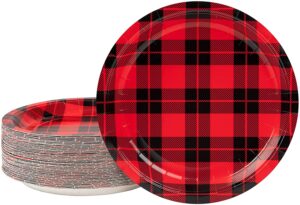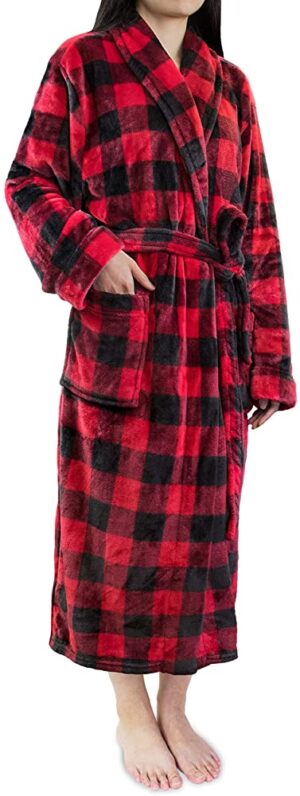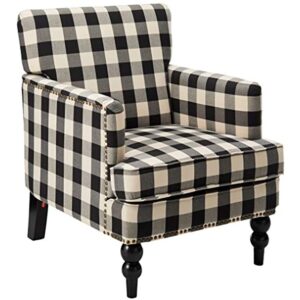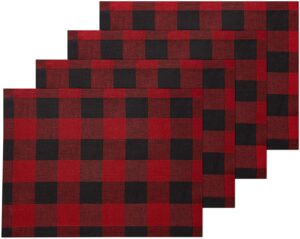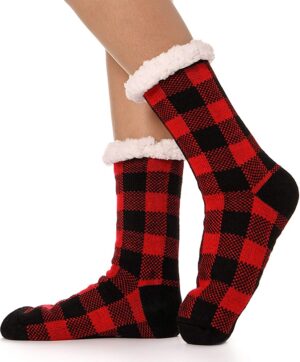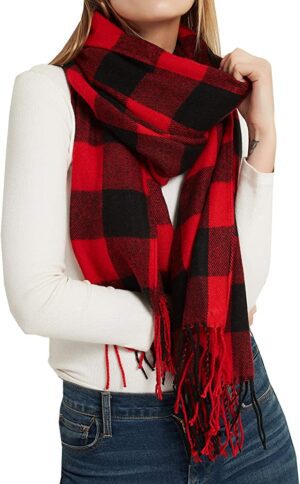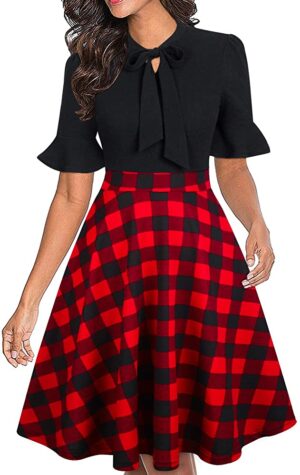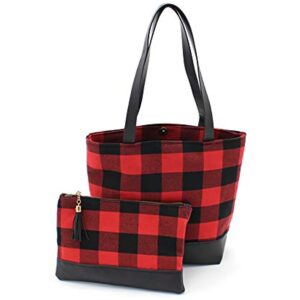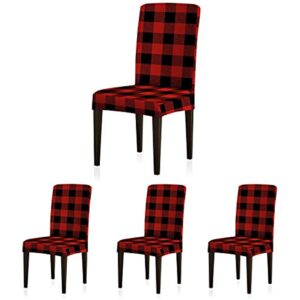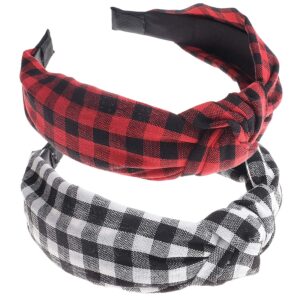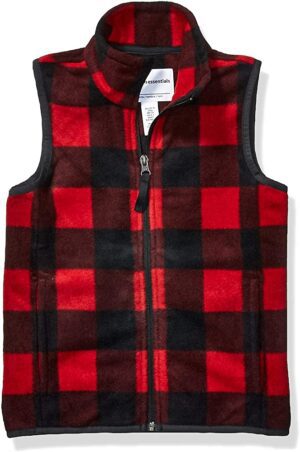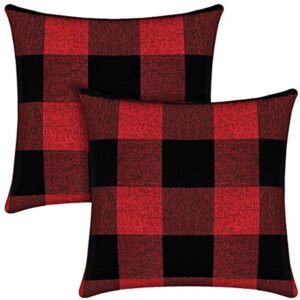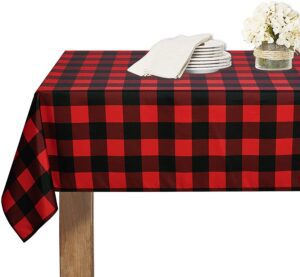Whether you’re a beginner or an experienced quilter, learning the art of hand quilting can add a personal touch to your creations. In this article, you will discover easy steps and helpful tips on how to hand quilt. From preparing your materials to stitching with precision, we will guide you through the process of creating beautifully quilted pieces by hand. So grab your quilting supplies and get ready to embark on a fulfilling journey of hand quilting!
Understanding the Basics of Hand Quilting
Definition and history of hand quilting
Hand quilting is the art of stitching together layers of fabric and batting to create a quilt. Unlike machine quilting, which is done using a sewing machine, hand quilting is done entirely by hand. This traditional technique has been practiced for centuries and has a rich history in cultures all around the world. In fact, the oldest surviving example of a quilt dates back to around 3,000 BCE.
Benefits and joys of hand quilting
There are numerous benefits to hand quilting that make it a popular choice among quilting enthusiasts. First and foremost, hand quilting allows for a greater level of control and precision. By using your hands, you can achieve finer and more detailed stitching, resulting in beautifully intricate designs. Hand quilting also provides a more personal touch, as every stitch is made with care and intention. Additionally, many people find hand quilting to be a relaxing and therapeutic activity, allowing them to unwind and tap into their creativity.
Difference between hand quilting and machine quilting
While both hand quilting and machine quilting involve stitching together layers of fabric and batting, there are some key differences between the two techniques. Hand quilting is a slower and more labor-intensive process, as each stitch is made by hand. This gives the quilting an old-world charm and creates a unique texture that cannot be replicated by a machine. Machine quilting, on the other hand, is faster and more efficient, making it a popular choice for those who want to complete their quilts in a shorter amount of time. Machine quilting also allows for the use of complex and intricate designs that may be difficult to achieve by hand.
Gathering Necessary Hand Quilting Supplies
Choosing your fabric and batting
When it comes to hand quilting, choosing the right fabric and batting is crucial. You’ll want to select a high-quality, 100% cotton fabric that is durable and easy to work with. Avoid using fabrics with stretch or synthetic fibers, as they can be more difficult to quilt. As for batting, there are various options to choose from, including cotton, wool, and polyester. Each type of batting has its own unique properties, so it’s important to consider factors such as warmth, loft, and washability when making your selection.
Needles and threads for hand quilting
The type of needle and thread you use for hand quilting can greatly impact the outcome of your project. For needles, choose a quilting needle that is sharp and has a small eye. This will allow for easier and smoother stitching. As for thread, opt for a high-quality quilting thread that is strong and resistant to breakage. Aurifil and Gutermann are popular brands known for their durability and wide range of colors. When it comes to color choice, select a thread that complements your fabric and enhances the overall design of your quilt.
Selection of quilting hoop and thimbles
To make the hand quilting process easier and more comfortable, consider using a quilting hoop and thimbles. A quilting hoop is a round or oval-shaped frame that holds the layers of your quilt taut, making it easier to stitch. Choose a hoop that is large enough to accommodate your quilt, but not so large that it becomes cumbersome to handle. Thimbles, on the other hand, protect your fingers from the repeated movement of the needle. They come in various materials, such as metal, leather, and plastic. Experiment with different types of thimbles to find one that fits your finger comfortably and allows for optimal control.
Markers and rulers for design creation
To create beautiful quilt patterns, you’ll need markers and rulers to guide your stitching. There are a variety of marking tools available, including water-soluble pens, chalk pencils, and washable fabric markers. Choose a marking tool that is easy to use and won’t damage your fabric. Rulers, on the other hand, help you create straight lines and accurate measurements. Look for quilting rulers that are transparent and have clear markings for ease of use. With the right markers and rulers, you’ll be able to bring your design ideas to life with precision and accuracy.
Preparation Steps Beforehand
Preparing the quilt top
Before you can start hand quilting, you need to prepare your quilt top. This involves trimming the edges of your quilt top to ensure they are even and square. You may also need to sew on borders or binding if desired. Press your quilt top to remove any wrinkles and ensure a smooth surface for quilting. Taking the time to properly prepare your quilt top will result in a more polished and professional-looking finished quilt.
Assembling your quilt sandwich
To hand quilt, you’ll need to assemble your quilt sandwich, which consists of the quilt top, batting, and backing fabric. Lay your quilt top right side up on a flat surface. Place the batting on top, ensuring that it is evenly distributed and extends to the edges of the quilt top. Finally, lay the backing fabric right side down on top of the batting, aligning the edges with the quilt top. Pin or baste the layers together to hold them in place while you quilt.
Basting the layers together
Basting is an essential step in hand quilting, as it keeps the layers of your quilt sandwich securely in place during the quilting process. There are several methods you can use to baste your quilt, including hand basting, spray basting, and using safety pins. Hand basting involves sewing long stitches across the entire quilt sandwich. Spray basting involves using a temporary adhesive spray to hold the layers together. Using safety pins involves placing safety pins at regular intervals throughout the quilt. Choose the basting method that works best for you and ensures that your layers are securely held together.
Understanding Hand Quilting Stitches
Learning the running stitch
The running stitch is one of the most basic stitches used in hand quilting. To perform a running stitch, bring your needle up through the fabric and pull the thread all the way through. Then, insert the needle back into the fabric, a short distance away, and repeat the process. The running stitch creates a series of small, even stitches that are ideal for securing the layers of your quilt together. Practice this stitch on scraps of fabric before starting on your quilt to ensure you have a consistent and even stitch length.
Mastering the rocking stitch
The rocking stitch is another commonly used stitch in hand quilting that creates a beautiful, even texture. To perform a rocking stitch, start by bringing your needle up through the fabric. Instead of pulling the thread all the way through, push the needle back into the fabric a short distance away, creating a small loop. Then, rock the needle back and forth, gently pulling the thread through the loop with each movement. This creates a series of small, evenly spaced stitches that mimic the motion of a rocking chair. The rocking stitch is especially useful when quilting curved or circular designs.
Getting familiar with other hand quilting stitches
In addition to the running stitch and rocking stitch, there are various other hand quilting stitches you can explore to add interest and texture to your quilts. Some popular stitches include the backstitch, the ladder stitch, and the seed stitch. The backstitch is similar to the running stitch, but involves overlapping the stitches for added strength. The ladder stitch is a decorative stitch that creates a ladder-like pattern. The seed stitch is a series of small, evenly spaced knots that create a textured effect. Experiment with these stitches and others to find ones that best suit your quilting style and the design of your quilt.
Creating the Quilt Pattern
Drawing the design on the quilt top
Before you start hand quilting, it’s a good idea to plan out your quilt design by drawing it on the quilt top. You can use a water-soluble pen or a washable fabric marker to sketch your design directly onto the fabric. Start by outlining the major elements of your design, such as borders, blocks, or motifs. Then, add in any smaller details or patterns that you want to incorporate. Drawing your design beforehand allows you to visualize the finished quilt and ensures that you stay on track while quilting.
Choosing pre-made patterns
If you’re not comfortable creating your own quilt pattern, there are plenty of pre-made patterns available for you to choose from. Whether you prefer traditional designs, modern motifs, or something in between, you’re sure to find a pattern that suits your taste. Look for quilt pattern books or websites that offer a wide selection of designs. Many patterns also include instructions and guidelines to help you achieve the desired outcome. With a pre-made pattern, you can easily follow along and create stunning quilts without the need for extensive design work.
Creating your own unique quilt pattern
If you’re feeling creative and want to make a one-of-a-kind quilt, consider creating your own unique quilt pattern. Start by sketching out your ideas on paper or using a digital design software. Experiment with different shapes, colors, and arrangements until you find a pattern that speaks to you. Once you’ve settled on a design, transfer it onto your quilt top using a marking tool. Creating your own pattern allows you to showcase your personal style and create a truly original piece of art.
Hand Quilting Techniques
Quilting within the hoop
Using a quilting hoop is a popular technique in hand quilting, as it helps to keep the layers of your quilt sandwich taut and allows for easier stitching. To quilt within the hoop, simply place your quilt sandwich inside the hoop, ensuring that all layers are smoothly aligned. Tighten the hoop to hold the layers in place, making sure not to stretch the fabric too tightly. As you quilt, move the hoop along the area you’re working on, keeping it taut and secure. Quilting within the hoop provides stability and control, making the quilting process more enjoyable and efficient.
Starting and ending your thread
Starting and ending your thread properly is crucial to the overall appearance and durability of your hand quilting. To start your thread, bring the needle up through the fabric at the starting point of your stitching. Leave a small tail of thread on the backside of the quilt top and secure it with a small knot. To end your thread, stitch a few small stitches on the backside of the quilt top, away from your quilting area. Trim the excess thread and secure it with a knot. Properly starting and ending your thread ensures that your stitches are secure and won’t unravel over time.
Achieving even stitches and rows
One of the hallmarks of a well-executed hand-quilted piece is even stitches and rows. To achieve this, practice keeping your stitches evenly spaced and of consistent length. Use a ruler or a spacing guide to maintain a uniform distance between each stitch. When quilting rows, ensure that they are parallel and straight by using a ruler or marking tool to guide your stitching. Take your time and adjust your stitching speed as needed to maintain control and precision. With practice and patience, you’ll be able to create beautifully even stitches and rows that enhance the overall appearance of your quilt.
Dealing with common challenges and mistakes
Hand quilting, like any other skill, can come with its fair share of challenges and mistakes. It’s important to approach these setbacks with patience and a positive mindset. If you make a mistake, such as a crooked stitch or an uneven row, don’t panic. Take a deep breath and assess the situation. Sometimes, the mistake can be easily corrected by carefully removing the stitches and starting again. Other times, you may need to embrace the imperfection and continue quilting, as it adds character to the piece. Remember that everyone makes mistakes, and it’s through these challenges that we learn and improve our quilting skills.

Hand Quilting Special Designs
Quilting around corners and curves
Quilting around corners and curves can be a bit challenging, but with the right techniques, you can achieve beautiful results. When quilting around corners, take your time and make small stitches to ensure that the fabric is securely anchored. For curves, use the rocking stitch to navigate smoothly along the contour of the curve. Take care not to pull the fabric too tightly or stretch it, as this can distort the shape. Practice on scrap fabric before attempting to quilt around corners and curves on your main project, as it may take some time to get the hang of it.
Quilting intricate designs
If you’re feeling adventurous and want to take your hand quilting to the next level, try quilting intricate designs. Intricate designs can include detailed motifs, complex geometric patterns, or even pictorial scenes. To tackle intricate designs, break them down into smaller sections and quilt one section at a time. Use marking tools to guide your stitching and ensure accuracy. Take breaks as needed to avoid fatigue and keep your stitches neat and even. Quilting intricate designs may require more time and effort, but the end result will be a stunning masterpiece that showcases your quilting skills.
Tips for quilting large projects
Quilting large projects can be intimidating, but it doesn’t have to be overwhelming. Here are some tips to help you tackle large quilts with confidence:
-
Break it down: Divide your quilt into manageable sections and quilt one section at a time. This will make the task feel less daunting and allow you to focus on each area individually.
-
Use quilting gloves: Invest in a pair of quilting gloves to improve your grip and control while quilting. This will help prevent your hands from slipping and allow for smoother stitching.
-
Take breaks: Quilting a large project can be physically demanding. Remember to take breaks to rest your hands, stretch, and refocus. Working in short, dedicated sessions will help you maintain your enthusiasm and prevent burnout.
-
Quilt in sections: When quilting a large project, consider quilting in sections rather than attempting to quilt the entire project in one go. This will make it easier to handle and maneuver your quilt.
-
Experiment with quilting designs: Large quilts provide more space for creative expression. Consider using different quilting designs or motifs in different sections of your quilt to add visual interest and variation.
Care and Maintenance of your Quilt
Cleaning a hand quilted item
Cleaning and caring for your hand quilted item is an important part of preserving its beauty and longevity. Depending on the fabric and batting used, you may be able to wash your quilt in a washing machine on a gentle cycle. However, it’s always a good idea to check the care instructions for your specific materials. If machine washing is not recommended, spot cleaning or professional dry cleaning may be the best options. Always handle your quilt with clean hands or wear quilting gloves to prevent dirt and oils from transferring to the fabric.
Proper storage of quilts
Proper storage is key to keeping your hand quilted items in pristine condition. To prevent dust and insects from damaging your quilts, store them in a cool, dry place away from direct sunlight. Avoid folding quilts in the same place repeatedly, as this can create permanent creases. Instead, consider rolling your quilts to reduce the risk of long-term damage. Use acid-free tissue paper or muslin fabric to layer between folds or rolls to protect the fabric. Regularly check your stored quilts for signs of pests or damage and take appropriate action if needed.
Repairing and restoring older quilts
If you have older or heirloom quilts that are in need of repair or restoration, it’s best to consult a professional quilt restorer or conservator. They have the knowledge and experience to handle delicate fabrics and antique quilts with care. Depending on the condition of the quilt, repairs may include replacing worn-out sections, reinforcing seams, or patching holes. It’s important to respect the historical and sentimental value of older quilts and entrust their restoration to experts who will preserve their integrity and beauty.

Advanced Hand Quilting Techniques
Exploring Sashiko, Hawaiian, and Amish quilting
While hand quilting basics provide a strong foundation, there are additional quilting techniques that can take your skills to the next level. Sashiko, a traditional Japanese quilting technique, involves using white thread on indigo fabric to create intricate patterns and designs. Hawaiian quilting, on the other hand, is characterized by large, bold motifs inspired by the natural beauty of the Hawaiian Islands. Amish quilting, rooted in the Amish community’s traditional values, features striking geometric designs and rich, contrasting colors. Explore these advanced techniques to expand your quilting repertoire and add unique elements to your quilts.
Hand quilting with embroidery stitches
Combining hand quilting with embroidery stitches can create stunning effects and add a touch of personalization to your quilts. Embroidery stitches, such as French knots, lazy daisies, and satin stitches, can be used to embellish quilt blocks, borders, or even entire quilts. Experiment with different thread colors, textures, and stitch patterns to create unique designs that complement your quilt. Hand quilting with embroidery stitches allows you to infuse your quilts with additional texture and visual interest, making them truly one-of-a-kind.
Creating textured and trapunto quilting
To add depth and dimension to your quilts, consider incorporating textured and trapunto quilting techniques. Textured quilting involves stitching with different thread weights or types to create a tactile effect. For example, you can use thicker threads for certain areas to make them stand out or create raised textures. Trapunto quilting, on the other hand, involves adding extra padding or batting beneath specific areas of your quilt top before quilting. This results in raised and puffy areas that make the design pop. Experiment with these techniques to add visual intrigue and a luxurious touch to your hand quilted projects.
Turning Your Hobby into a Business
Selling your hand quilts online and offline
If you’ve developed a passion for hand quilting and want to share your creations with others, you may consider selling your hand quilts. There are various avenues to sell your quilts both online and offline. Online marketplaces, such as Etsy and eBay, provide a platform for you to showcase and sell your quilts to a global audience. Social media platforms, such as Instagram and Facebook, are also popular for promoting and selling handmade items. Offline, consider local craft fairs, artisan markets, or even approaching local boutique shops and galleries to display and sell your quilts. A combination of online and offline selling can help you reach a broader customer base.
Pricing your quilts
Determining the right price for your hand quilts can be a challenging task, as it involves considering material costs, time spent, and the overall value of your work. You’ll need to factor in the cost of fabric, batting, and thread, as well as the hours you spent designing, cutting, piecing, and quilting. Additionally, consider the uniqueness and complexity of your design, the quality of your craftsmanship, and the demand for similar quilts in the market. Researching prices of comparable hand quilts can give you a better understanding of the market value. Remember to account for your time and effort, while remaining competitive within your target market.
Marketing and promoting your hand quilting work
Once you’ve created a collection of hand quilts to sell, it’s time to market and promote your work. Start by establishing an online presence through a dedicated website, social media accounts, or an online marketplace. Showcase high-quality photographs of your quilts and provide detailed descriptions that highlight the unique features and craftsmanship. Engage with your audience through regular updates, behind-the-scenes glimpses of your creative process, and customer testimonials. Offline, attend local craft shows and events to connect with potential customers and establish relationships within the quilting community. Word of mouth can be a powerful tool, so encourage satisfied customers to share their experiences and recommend your quilts to others.
Hand quilting is a rewarding and fulfilling hobby that allows you to create beautiful, heirloom-quality quilts. By understanding the basics of hand quilting, gathering the necessary supplies, and mastering various stitching techniques, you can create stunning quilts that showcase your creativity and skill. From caring for your quilts to exploring advanced techniques, there’s always something new to learn and discover in the world of hand quilting. Whether you choose to keep your quilting as a personal hobby or turn it into a business, the joy and satisfaction of creating something handmade with love will always shine through.






